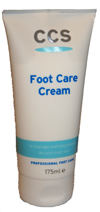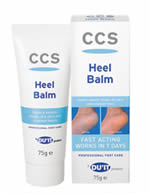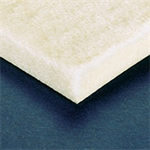Corns and Calluses
Corns and Calluses
Corns and calluses are thick, hard, toughened and dry areas of skin found on the feet. They are caused by friction or pressure from shoes, adjacent bones, or the ground as you walk. They are found anywhere on the feet and can range from very mild to very severe ulcerated/broken down areas which can also be infected. Corns and calluses can cause foot pain and can be very painful.
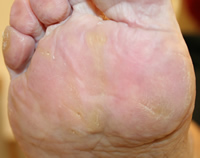
Plantar Foot Callus with several small corns in the area |

Plantar Foot Callus |
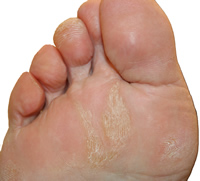
Plantar Foot Callus |
Corns
A corn is a small conical shaped area of hard dead skin which presses on the underlying nerve endings and can often cause intense pain. They are normally quite small and round in shape. They are caused by friction and pressure from shoes and the ground surface. They can be found anywhere on the foot but are more commonly found on the ball of the foot and on the top of the toes. Occasionally they are found between the toes. They are often easily removed or reduced in size by a chiropodist or podiatrist giving instant relief from pain.
Soft Corns
Soft corns are found between the toes, most commonly between the 4th and 5th toes. They are caused by the adjacent toe bones rubbing against each other. They are "soft" because of the dampness between the toes which keeps them moist. They can become infected. They often look white and rubbery. Sometimes athletes foot (a fungal infection) is also found in the area of the soft corn.
Callus
A callus is a larger area of hard dead skin but has no central core like a corn. It is normally less well defined than a corn. Calluses are caused by rubbing, friction and/or pressure from shoes and the ground surface. Calluses are commonly found on the sole of the foot over the metatarsal bones. Calluses might not cause any discomfort but with time or increasing thickness and size can cause a painful burning sensation on the sole of the feet.
What causes corns and calluses
- Tight shoes and socks
- Seams
in inappropriate places
- Deformed and crooked toes (for example a hammer or claw toe which rubs on the top of a shoe)
- Deformed feet (for example a bunion and the bony prominences which rubs on the side or top of the shoe)
- Biomechanical /overloading in certain areas on the feet (can cause pressure in an isolated place on the plantar surface (bottom) of the foot)
- Dry skin
- Age - older skin is less elastic and much more likely to get damaged
Shoes and footwear
Shoes should be the correct size, not too small or too large.
Shoes should have plenty of room in the toe box area for the toes, particularly if you have hammer or claw toes, have soft uppers, low heels and plenty of support on the medial (inner) side of the shoe.
Carefully avoid shoes that have stitching in inappropriate places for you.
A slightly flared out heel offers much greater stability than a heel that flares in.
See the shoes I recommend.
Treatment from :
Chiropodist or
Podiatrist
Paring Corns and Calluses
A chiropodist or podiatrist will carefully pare (cut) the dead skin away with a scalpel blade. Regular treatment is often needed to control the build up of hard skin.
Footwear and Orthotics
A chiropodist or podiatrist can advise on correct footwear, padding and orthotics (insoles or arch supports to correct walking and biomechanical problems) to try and prevent the build up of corns and calluses. See the shoes I recommend. See the ready made orthotics and Superfeet Insoles I recommend.
Padding
A chiropodist or podiatrist can advise on padding to deflect pressure away from area.
Self Treatment
Medicated Corn Pads - contain salicylic acid
Strong chemicals can significantly harm the skin and may cause complete skin breakdown.
Use extreme caution. Be aware that people can be different ages and have different medical histories. At one end of the scale you might be young and fit and have very healthy skin. However at the other end of the scale you might be elderly, have extremely thin skin and be suffering from poor circulation. It might just about be OK for the young and fit person to use salicylic acid on a corn or callus but downright irresponsible and dangerous to self treat with salicylic acid if you are in the "elderly" category. The majority of people should NOT self treat.
Diabetics and people with poor circulation should never self treat corns and calluses. If you have diabetes or poor circulation you should always get treatment from a registered chiropodist or podiatrist.
Padding
2mm chiropody felt is an excellent padding material. On the tip of your toes I recommend products like Profoot Gel Toe Protectors. Between your toes I recommend Scholl Gel Toe Separators or Scholl Gel Toe Spreaders
File Rough Skin
Smooth away rough areas of skin. I recommend this professional foot file . Also the Heel Smoother Pro . Also the Heel Smoother Pro is great for rough heels.
is great for rough heels.
Foot cream
Foot cream
to lubricate areas. I recommend
CCS Professional Foot Care Cream which is an excellent foot cream. If you have extremely dry skin on your heels you should use CCS Heel Balm for 7 days and then return to the regular CCS Foot Care Cream.
Corn cutting knives and blades
Never self treat with these. It is so easy to go just a little bit too far and cause damage to the skin.
How can I stop corns and calluses developing?
Wear shoes that fit correctly and are appropriate to the activity you are doing.
Wash feet regularly
Apply
CCS Professional Foot Care Cream to lubricate areas
Wear orthotics (insoles to change the way you walk) if you need them. See Orthaheel, Vasyli and Superfeet insoles.
|



